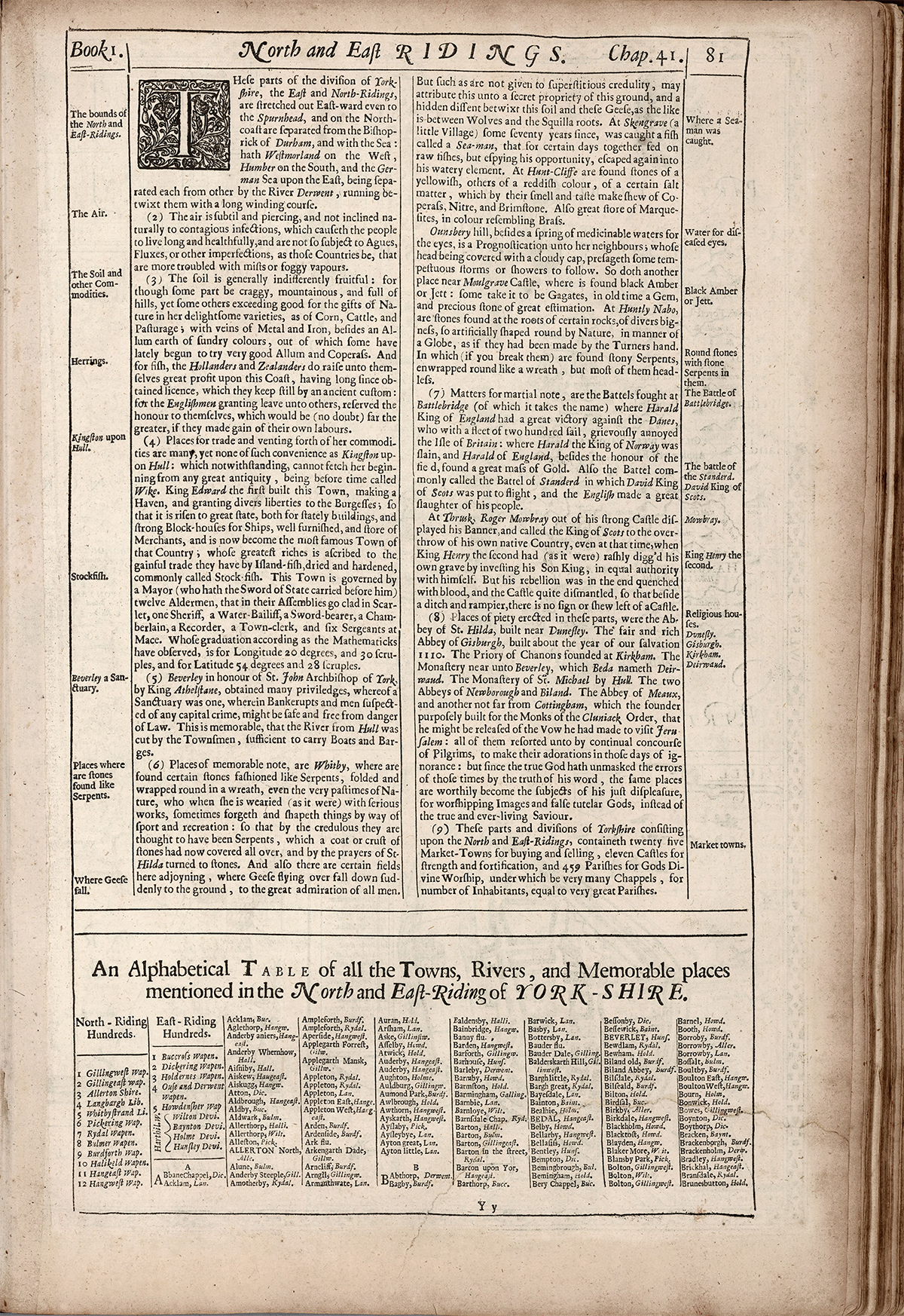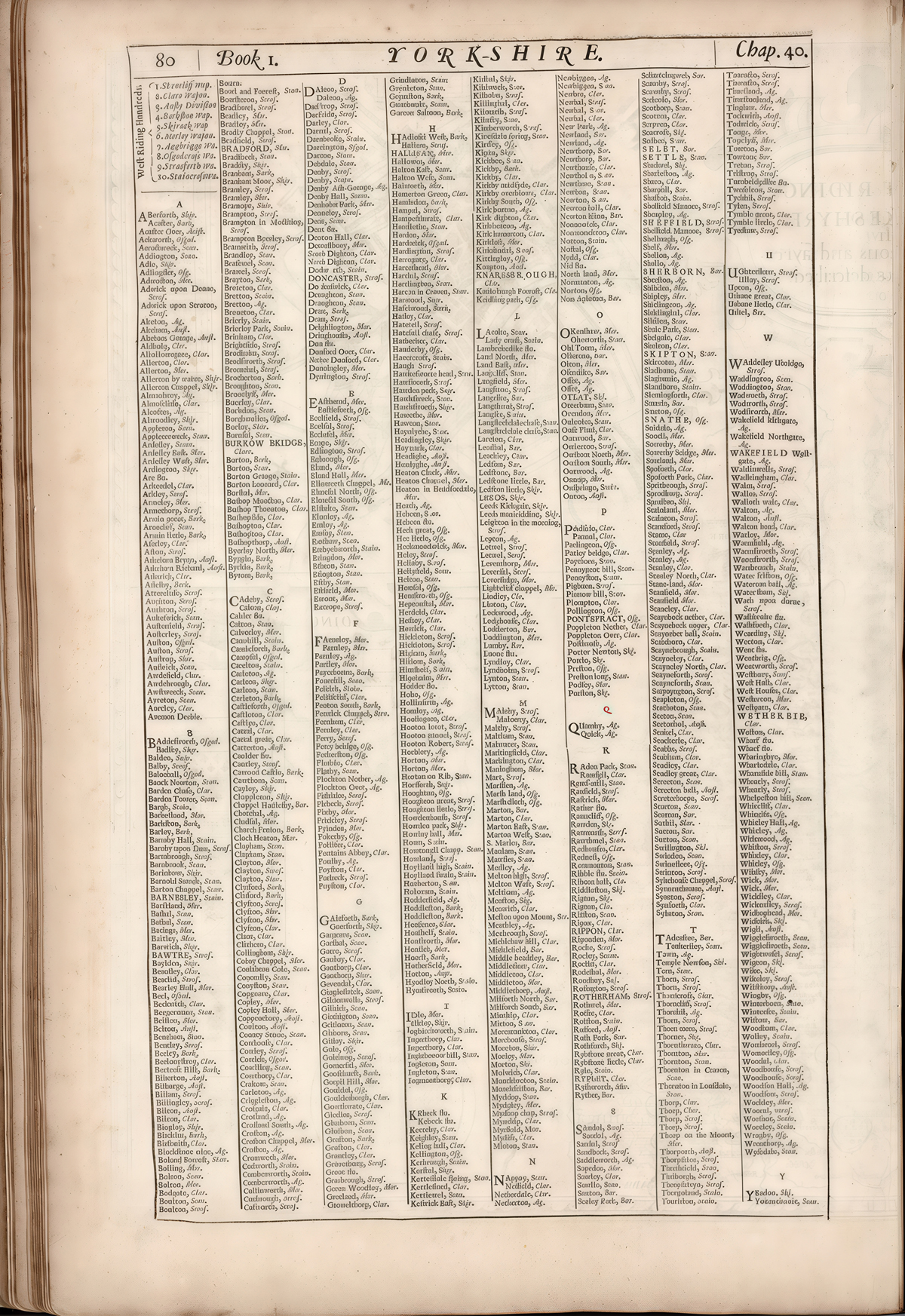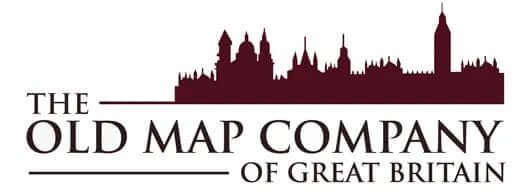Description

Speed’s notes on the verso of the atlas page featuring the North and East Ridings.
The following translation from the original Olde English may contain some errors.
(1) These areas are part of the division of Yorkshire — the East and North Ridings. They stretch eastward all the way to Spurn Head and are separated on the north coast from the Bishopric of Durham by the sea. They border Westmorland to the west, the Humber to the south, and the North Sea to the east. The River Derwent, winding through the land, divides the East and North Ridings.
(2) The air here is sharp and clear, and not naturally prone to contagious diseases. As a result, people tend to live long and healthy lives, and are less likely to suffer from fevers, dysentery, or other common ailments found in mistier, damper regions.
(3) The soil is generally of moderate fertility. While some areas are rocky and mountainous, others are rich in natural beauty and resources, offering good crops, livestock, and pastures. There are also veins of metal and iron, and colourful alum-rich earth, which has recently been used to produce good-quality alum and copperas. The coast is rich in fish, which the Dutch and Zeelanders profit from greatly, having long held fishing rights there. Though the English granted them permission, they kept the honour to themselves — and would surely gain more if they reaped the profits of their own waters.
(4) There are many places for trade, but none as convenient as Kingston upon Hull. This town, which wasn’t known in ancient times (formerly called Wike), was built by King Edward I. He created a harbor and granted privileges to its citizens. Since then, Hull has grown in prominence, with grand buildings, strong fortifications, well-equipped ships, and a large population of merchants. Its wealth mainly comes from its trade in dried fish from Iceland, commonly known as stockfish. The town is governed by a mayor (who carries the Sword of State), twelve aldermen in scarlet, a sheriff, a water-bailiff, a sword-bearer, a chamberlain, a recorder, a town clerk, and six sergeants-at-mace. According to mathematicians, it lies at 20°30′ longitude and 54°28′ latitude.
(5) Beverley, in honour of Saint John, Archbishop of York, was granted many privileges by King Athelstan, including the right of sanctuary — where debtors and those accused of serious crimes could find safety from the law. Notably, the townspeople also cut a canal from the River Hull to Beverley, navigable by boats and barges.
(6) Notable places include Whitby, where stones shaped like coiled serpents are found — seen by some as nature’s playful work, and by the superstitious as actual serpents turned to stone by the prayers of Saint Hilda. Nearby, geese flying overhead are said to suddenly fall from the sky, puzzling all observers.
Skeptics, however, believe it is due to a unique property of the soil, much like wolves avoid certain plant roots.
At Skengrave (a small village), about seventy years ago, a sea creature called a “sea-man” was caught and fed on raw fish for a few days before escaping back into the sea.
At Huntcliff, stones of yellowish or reddish color are found, which smell and taste like copperas, saltpeter, and brimstone. There are also many “marcasites,” which look like brass.
Ounsbery Hill has a spring believed to be good for eye conditions. When its peak is covered in clouds, it foretells storms or rain. Near Mulgrave Castle, black amber (also called jet) is found — once considered a precious gem.
At Huntly Nabo, naturally round stones are found under rocks, shaped like globes, as if turned by a craftsman. When broken open, they sometimes reveal stone “serpents” coiled inside, though most are headless.
(7) Military history includes the battle at Battlebridge, named after a great victory by King Harold of England over the Danes, who had come with 200 ships and heavily attacked Britain. Harold of Norway was killed, and King Harold of England found a large treasure of gold.
Also, at the Battle of the Standard, King David of Scotland was defeated, and many Scots were killed.
At Thirsk, Roger Mowbray raised his banner from his strong castle and invited the King of Scots to invade England at a time when King Henry II had unwisely made his son co-king. This rebellion was eventually crushed, the castle dismantled, and now only a ditch and earthen wall remain.
(8) Religious sites once found in the area include the Abbey of Saint Hilda near Dunseley, the rich Gisborough Abbey (built around 1110 AD), the Priory at Kirkham, the monastery near Beverley (called Deirwand by Bede), Saint Michael’s Monastery by Hull, the abbeys of Newborough and Byland, Meaux Abbey, and another near Cottingham built for Cluniac monks — founded by a man wishing to be released from his vow to visit Jerusalem. These places drew many pilgrims in those earlier, superstitious times. But since the truth of the Gospel has been revealed, such sites — once devoted to image worship and false saints — now rightly suffer God’s displeasure.
(9) These North and East Ridings of Yorkshire include 25 market towns for trade, 11 castles for defence, and 459 parishes for religious worship — many of which include chapels that serve populations as large as full parishes.













